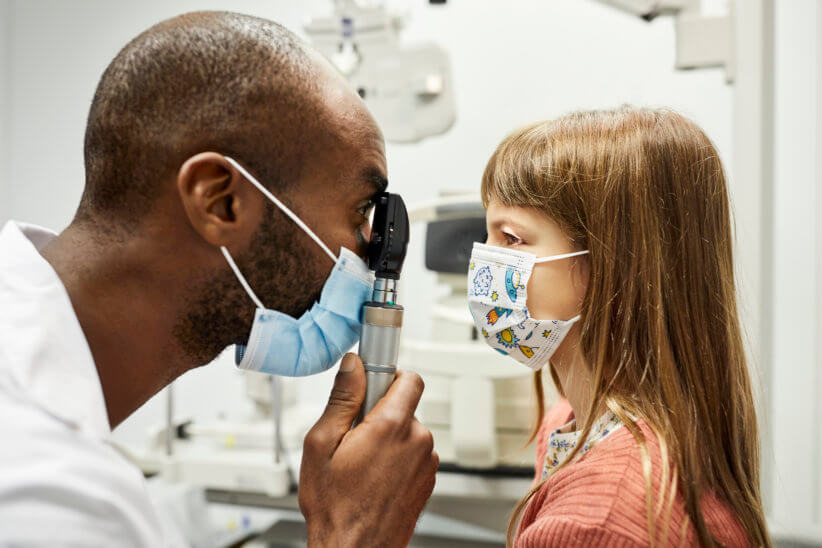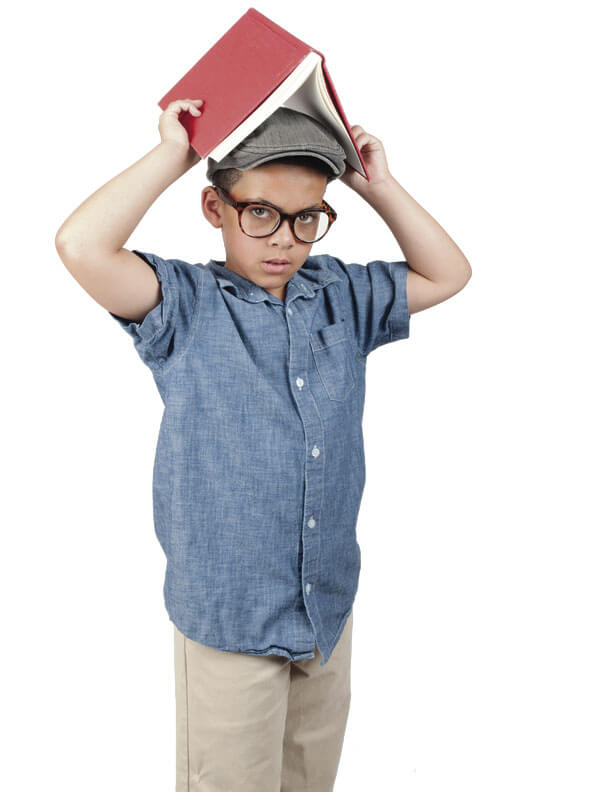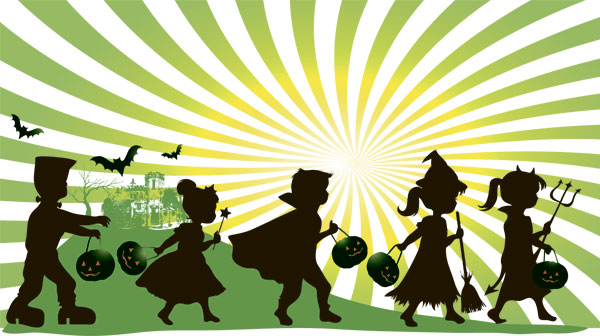
Keeping an Eye on Kids’ Vision: How The Pandemic has Shed Light on Nearsightedness in Children
By Elizabeth Winchester
Stephanie Lee* took her kids for their annual school physicals in August. She was surprised to learn that her son James*, 11, could not even make out the second line of the eye exam. “In kindergarten, James had astigmatism, which is very common in Asian cultures [like his father’s] and wore glasses for a little while to correct the problem,” Lee explains. Now years later, Lee’s pediatrician told her that James is myopic, or nearsighted, in one eye. When people are nearsighted, they have difficulty seeing things that are far away. “I’m guessing the myopia has more to do with screen time,” Lee shares.
A Pandemic Problem?
Experts would say that Lee is likely correct—and unfortunately, not alone. Xiaoying Zhu, O.D., Ph.D., is the lead clinician at SUNY College of Optometry’s Myopia Management Clinic in Manhattan. Almost all of the patients at the clinic are children. Dr. Zhu says the clinic is “seeing a higher number of new patients,” which supports recent clinical studies concluding that “home confinement and prolonged computer work during the pandemic appear to have substantially increased both myopia progression and prevalence,” she says. “More and more kids are developing myopia every day.”
Other experts, such as Richard Hom, O.D., who is the optometric director at Anthem Blue Cross and Blue Shield, see the growing problem a little differently. “The pandemic brought on a rise in the identification of myopia in children and is probably the fastest growing area of study and concern,” he says. “It is not so much an increase in the prevalence, but rather, a greater visibility of the problem.”
Studying Myopia
Long before the pandemic, many studies showed that myopia was on the rise. The National Eye Institute found that nearsightedness among Americans grew 66 percent from 1971 to 2004. Experts now estimate that half of the people in the world could be nearsighted by 2050.
While the cause of myopia is not fully understood, it is considered a combination of genetic factors (family history of myopia) and environmental factors (prolonged near work and lack of outdoor activities and sun exposure). The pandemic may have worsened the problem among kids because of an increase in near work, such as computer and cellphone use, and a decrease in time spent outdoors.
“It is currently unclear if myopia is increasing from environmental factors, like close work or looking at a screen all day,” Dr. Hom explains, “however there is research that suggests certain kinds of light emitting from a laptop or computer and genetics will stimulate eye elongation faster than the original curves of the eye, resulting in myopia.” When people have normal vision, their eyes’ physical length match their focal length. Distant light is focused on the retina. (The retina is a layer at the back of the eyeball with cells that convert visual input to electrical signals that travel to the brain, where an image is formed.) When people are nearsighted or myopic, their eyes’ physical length is longer than the focal length. As a result, distant light is focused in front of the retina. The result is that far-away objects look blurry. The increase in the degree of myopia is caused by the elongation of the eye. Excessive elongation of the eye can lead to myopia complications.
While myopia can be corrected with contact lenses or glasses, it is more than an optical problem. “Myopia is associated with certain complications inside the eye and can even cause vision loss later in life, even as early as middle age,” Dr. Zhu warns. “We really want to control myopia progression by slowing eye growth as early as possible. Any degree of myopia can benefit from myopia management.” The four main pillars for myopia management are: low-dose atropine, multifocal soft contact lenses (daytime contact lens wear), orthokeratology (overnight contact lens wear), and multifocal glasses (bifocal glasses and progressive addition lenses).
How Parents Can Help
Taking kids for an annual eye exam is the best way to detect myopia, or any other vision problem. Children can be seen by an eye doctor as young as 6 months old. As in Lee’s case, pediatricians can also identify a vision problem at an annual exam, just as a nurse can at a school vision screening. But once a problem is detected, it is important to follow up with a pediatric optometrist.
Be on the lookout for signs that your child may be nearsighted. Do they get very close to the TV when they are watching a show? Do they complain of having difficulty seeing the letters on the board in their classroom? Do they squint when they try to see objects that are far away? These are all signs of a potential issue.
Sunlight has been shown to be a protective factor against myopia onset. Encourage kids to play outside, to ensure that they get enough exposure to sunlight. “Even reading a book in the sun is beneficial,” notes Dr. Zhu, who also suggests following the Triple 20 Rule: “A child should take a 20-second break to look at something at least 20 feet away after 20 minutes of near work (computer and electronics use, reading).”
Carrots are rich in vitamin A, which is essential for eye function, but eating all the carrots in the world won’t prevent myopia onset or progression. The best advice that Dr. Zhu can give to parents is to schedule an eye exam and get outside. “Keep myopia away by going outdoors to play!”
*Names have been changed to protect privacy.
Psst… Check out The 15 Top Basketball Programs for Kids in NYC!
















